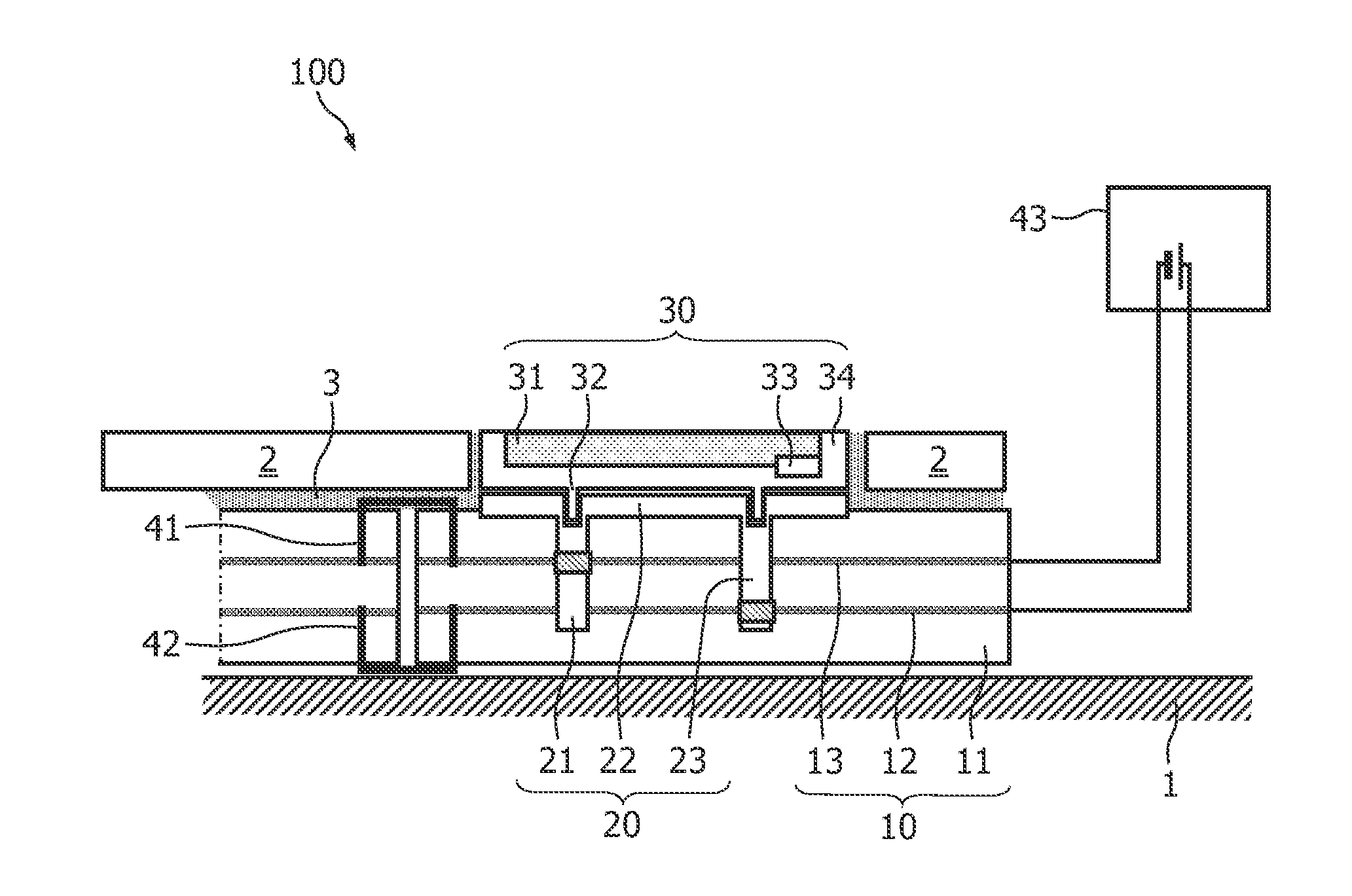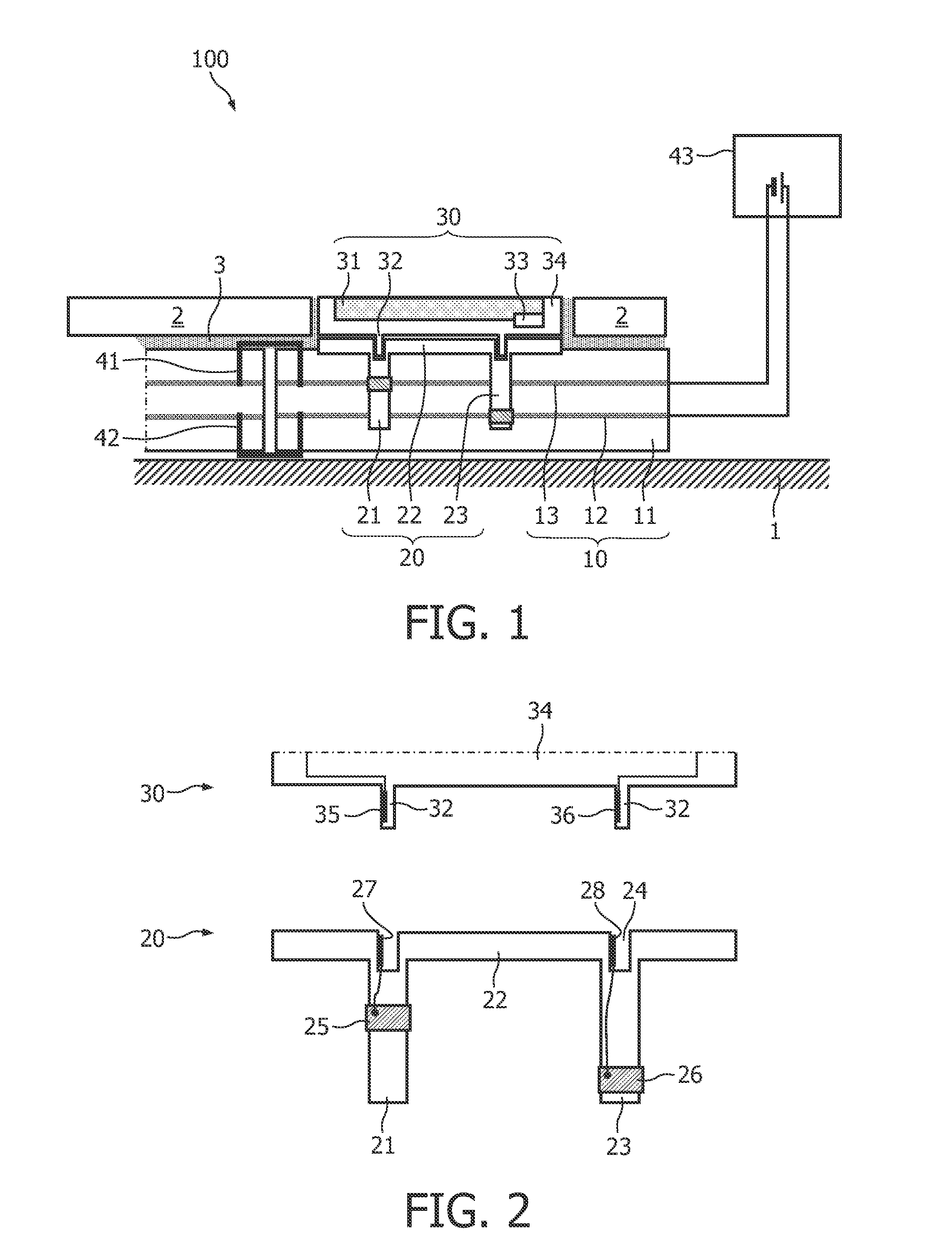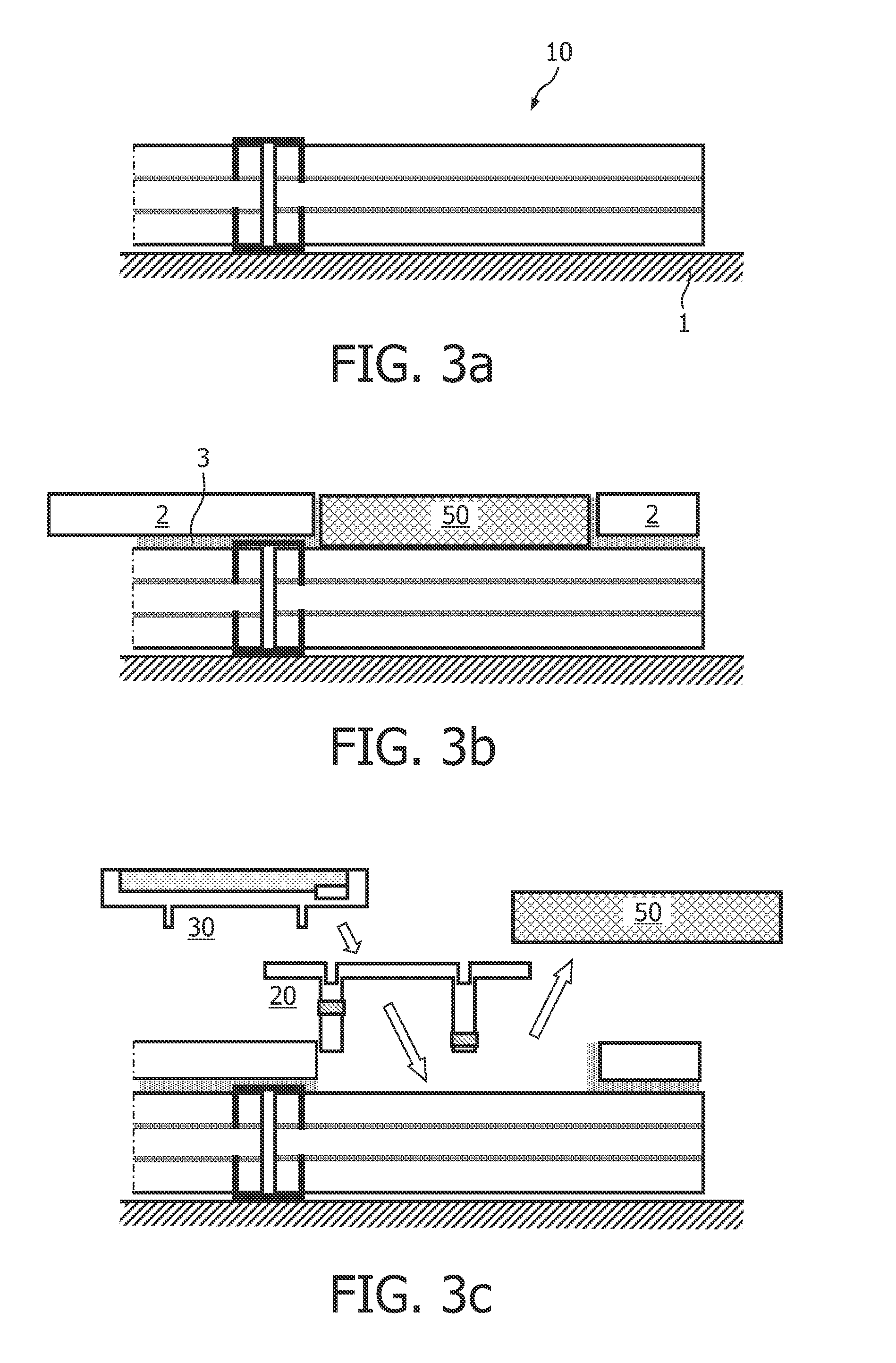Illuminated tiling system
a technology of illumination and tiling, which is applied in the direction of lighting and heating apparatus, coupling device connection, lighting support device, etc., can solve problems such as components on the wall, and achieve the effect of simple and cost-effectiv
- Summary
- Abstract
- Description
- Claims
- Application Information
AI Technical Summary
Benefits of technology
Problems solved by technology
Method used
Image
Examples
Embodiment Construction
[0032]Like reference numbers in the Figures refer to identical or similar components.
[0033]Tiles and mosaics as they are for example found in bathrooms provide nice opportunities for incorporating a lighting, wherein a “mosaic” is by definition a regular or irregular pattern of (typically small) flagstones. As light sources, LEDs can be used in this case. To avoid a point source characteristic, it is further preferred to use OLEDs as light sources, which offer the following advantages:[0034]homogeneous light;[0035]extreme small thickness;[0036]large area;[0037]easy dimmable;[0038]cold surface;[0039]color variability;[0040]different forms (e.g. letters, symbols);[0041]variable off-state appearance.
[0042]When trying to incorporate light sources into a tiling or mosaic, the following problems have to be faced:[0043]Pre-installation of the light sources is practically impossible, because the exact position has to be known as the alignment of the tiles is very critical.[0044]Additionally...
PUM
 Login to View More
Login to View More Abstract
Description
Claims
Application Information
 Login to View More
Login to View More - R&D
- Intellectual Property
- Life Sciences
- Materials
- Tech Scout
- Unparalleled Data Quality
- Higher Quality Content
- 60% Fewer Hallucinations
Browse by: Latest US Patents, China's latest patents, Technical Efficacy Thesaurus, Application Domain, Technology Topic, Popular Technical Reports.
© 2025 PatSnap. All rights reserved.Legal|Privacy policy|Modern Slavery Act Transparency Statement|Sitemap|About US| Contact US: help@patsnap.com



